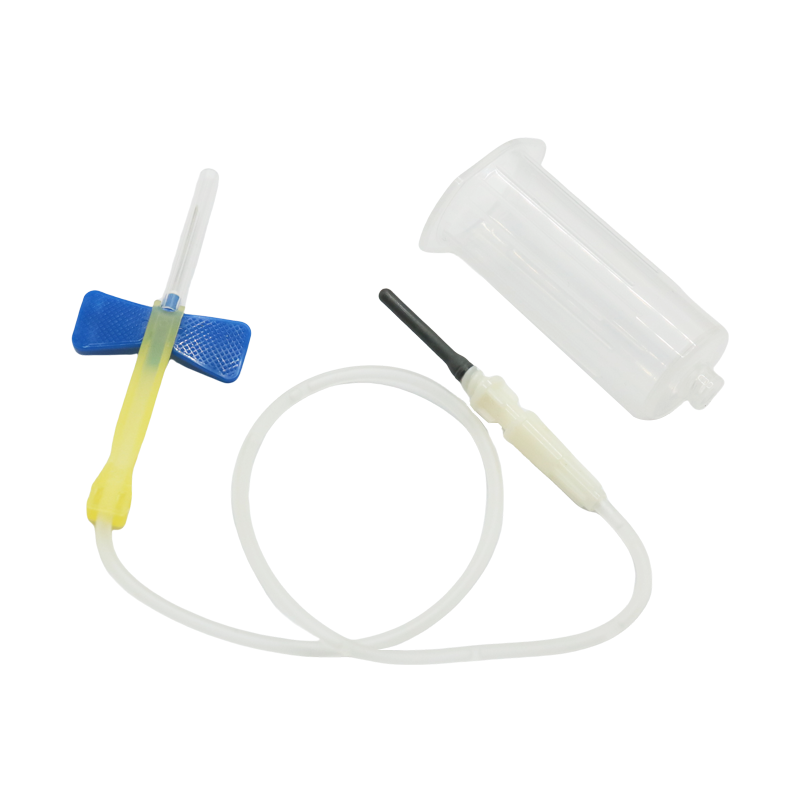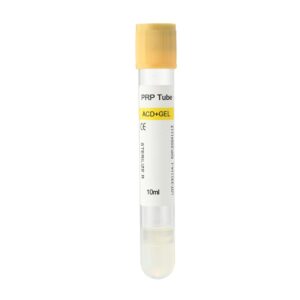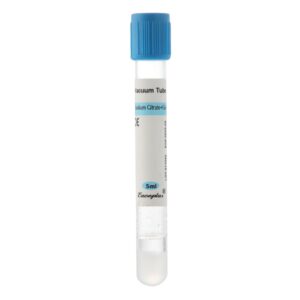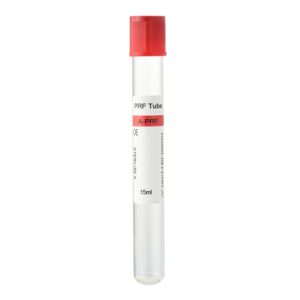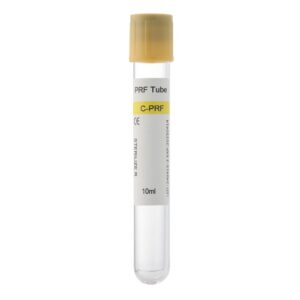A butterfly needle, a winged infusion set, is a small device used for drawing blood or administering medications through a vein. Its unique structure makes it easier to use and more comfortable for patients. The needle’s name comes from the two plastic wings attached to it, which resemble butterfly wings. These wings help healthcare professionals stabilize the needle and reduce patient discomfort, especially for those with small veins or limited mobility.
Butterfly needles are commonly used for short-term intravenous infusions or blood draws, particularly for patients with small or fragile veins, such as the elderly, children, or those with hard-to-find veins. The main features of a butterfly needle are its thin needle, short length, and winged design, which provide better stability in the vein.
Components of a Butterfly Needle
A butterfly needle consists of the following main parts:
- Needle: A thin, short needle that helps minimize pain during insertion.
- Plastic Wings: The butterfly-like wings allow for better grip and stabilization of the needle.
- Tubing: A flexible, transparent tube connecting the needle to a syringe or IV line, allowing easy observation of fluid flow.
- Connector: The part that attaches to a syringe or IV equipment.
How to Use a Butterfly Needle
Using a butterfly needle correctly requires specific steps and skills to ensure the patient’s safety and the procedure’s success. Here’s a step-by-step guide:
- Preparation
- Gather all necessary items, including gloves, alcohol swabs, a tourniquet, butterfly needle, syringe or IV bag.
- Confirm the patient’s identity and explain the procedure to help them relax.
- Disinfect the Venipuncture Site
- Use an alcohol swab to disinfect the area, typically the inside of the elbow or the back of the hand.
- Let the skin dry to reduce the risk of infection.
- Apply the Tourniquet
- Place the tourniquet about 7-10 cm above the venipuncture site to help the vein become more prominent.
- Avoid tying it too tightly to prevent discomfort or restricted blood flow.
- Hold the Butterfly Needle
- Hold the butterfly needle by its wings using your thumb and forefinger, with the needle angled at 20-30 degrees.
- Insert the Needle
- Carefully insert the needle into the vein and watch for blood return in the tubing.
- If blood return is observed, the needle is in the vein, and you can release the tourniquet and connect the syringe or IV line.
- Secure the Needle
- Use tape to secure the butterfly wings, ensuring the needle stays in place.
- Make sure the tubing is not pulled to prevent the needle from shifting.
- Draw Blood or Administer Infusion
- Once connected to the syringe or IV bag, draw blood or administer fluids.
- Remove the tourniquet after beginning the procedure.
- Remove the Needle and Apply Pressure
- Once finished, remove the needle quickly and apply a clean cotton ball to the site, pressing until the bleeding stops.
Benefits of Using a Butterfly Needle
- Increased Comfort: The thin, short needle, along with the winged design, reduces pain for patients and makes the procedure more comfortable.
- Easy to Handle: The wings make it easier for healthcare professionals to grip and stabilize the needle, reducing the chances of failed attempts, especially in patients with small or fragile veins.
- Stable: The attached tubing helps keep the needle steady during blood draws or infusions, minimizing movement and discomfort.
- Versatile: Butterfly needles are ideal for elderly patients, children, or those with hard-to-find veins, making them a versatile choice for short-term infusions or blood draws.
Drawbacks of Using a Butterfly Needle
- Higher Cost: Butterfly needles are more expensive compared to regular IV needles, making them less suitable for widespread use in resource-limited settings.
- Requires More Skill: Although the wings provide better stability, using a butterfly needle still requires skill, especially with difficult veins, and may need more experience.
- Risk of Needle Bending: Because the needle is so thin, improper use can cause it to bend or puncture through the vein wall, leading to failed attempts.
Common Uses for Butterfly Needles
- Pediatric and Elderly Patients: These patients often have smaller or more fragile veins, and butterfly needles can help make the experience less uncomfortable.
- Short-Term IV Therapy: This is ideal for situations requiring brief infusions or blood draws, such as collecting samples for lab tests or administering medication over a short period.
- Hard-to-Find Veins: Butterfly needles’ flexible design and ease of use make them suitable for patients with deep or less visible veins, increasing the success rate.
Butterfly Needles vs. Regular IV Needles
- Needle Design: Butterfly needles are shorter and thinner, making them ideal for smaller veins, while regular IV needles are better for larger veins.
- Handling: Butterfly needles’ winged design allows for a more stable grip, while regular needles are simpler and less costly, making them more common in general use.
- Patient Comfort: The thin needle of a butterfly reduces pain during insertion, especially for patients needing multiple attempts.
Precautions When Using a Butterfly Needle
- Suitable Patients: Butterfly needles are ideal for children, the elderly, and those with small veins, but regular IV needles may be just as effective for general patients.
- Sterile Technique: Following sterile techniques when using a butterfly needle to avoid infections is crucial.
- Careful Insertion: Because of the thin needle, it’s important to be gentle during insertion to avoid bending the needle or puncturing through the vein wall.
- Secure Tubing: During the procedure, ensure the tubing is not pulled or tugged, preventing accidental movement or injury.
Conclusion
Butterfly needles are designed to make venipuncture more precise and comfortable for patients. They are particularly useful for the elderly, children, and those with difficult-to-access veins. Although they can be more expensive and require more skill, butterfly needles offer higher comfort and better success rates for specific patient groups. For healthcare professionals, mastering the use of butterfly needles is an essential skill to ensure high-quality care.

